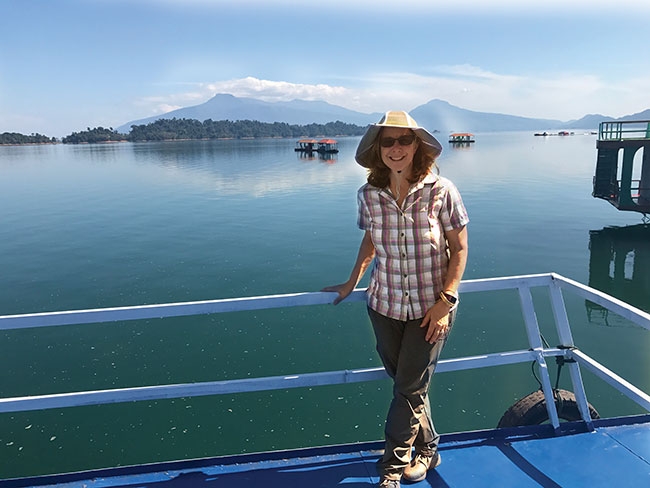
Gender gap in aquaculture
February 19, 2019
By Matt Jones
Research from AquaFish Innovation Lab (AIL) at Oregon State University shows that women are underrepresented in aquaculture-related research paper authorship. This can have an impact on their careers as publication credits are an important factor for promotions, funding, and tenure positions for academic researchers.
 AIL Gender Specialist Morgan Chow says the gender gap in aquaculture research authorship is a timely topic. Research from AquaFish Innovation Lab (AIL) at Oregon State University
AIL Gender Specialist Morgan Chow says the gender gap in aquaculture research authorship is a timely topic. Research from AquaFish Innovation Lab (AIL) at Oregon State UniversityAcademic papers are often a team effort but there is no set process for determining what order the authors’ names should appear when published. Authorship order can make a big difference to academics’ careers as it can be an indicator of status in the discipline, according to Morgan Chow, Gender Specialist at AIL. She noted that authors who are listed first or last generally see the most credit. Women are underrepresented both in those first and last positions, as well as in papers with a single-listed author.
While US Department of Education statistics show women account for roughly 50 percent of the graduating classes in agriculture, biological and natural sciences, the research on gender authorship reveals that the percentage of women authors was low: 13.8 percent and 15.7 percent in JSTOR (Journal Storage) and the International Aquaculture Curated Database, respectively, and a scant 3.7 percent in Web of Science.
While Chow’s research establishes this statistical trend, other researchers are examining in a wider context why women are underrepresented in research authorship. A 2015 study published by Elsevier titled Gender in the Global Research Landscape, for example, analyzed research performance and gender over 20 years, 12 geographies and 27 subject areas.
“It’s getting increased attention because it’s important, and it’s a very timely to talk about this and it’s important to find robust ways to really understand what’s happening,” says Chow. “It’s also challenging, especially with a discipline like aquaculture. Our effort is just that one piece of many other studies that are trying to consider how academic institutions or other structures may or may not propagate these gender inequities.”





